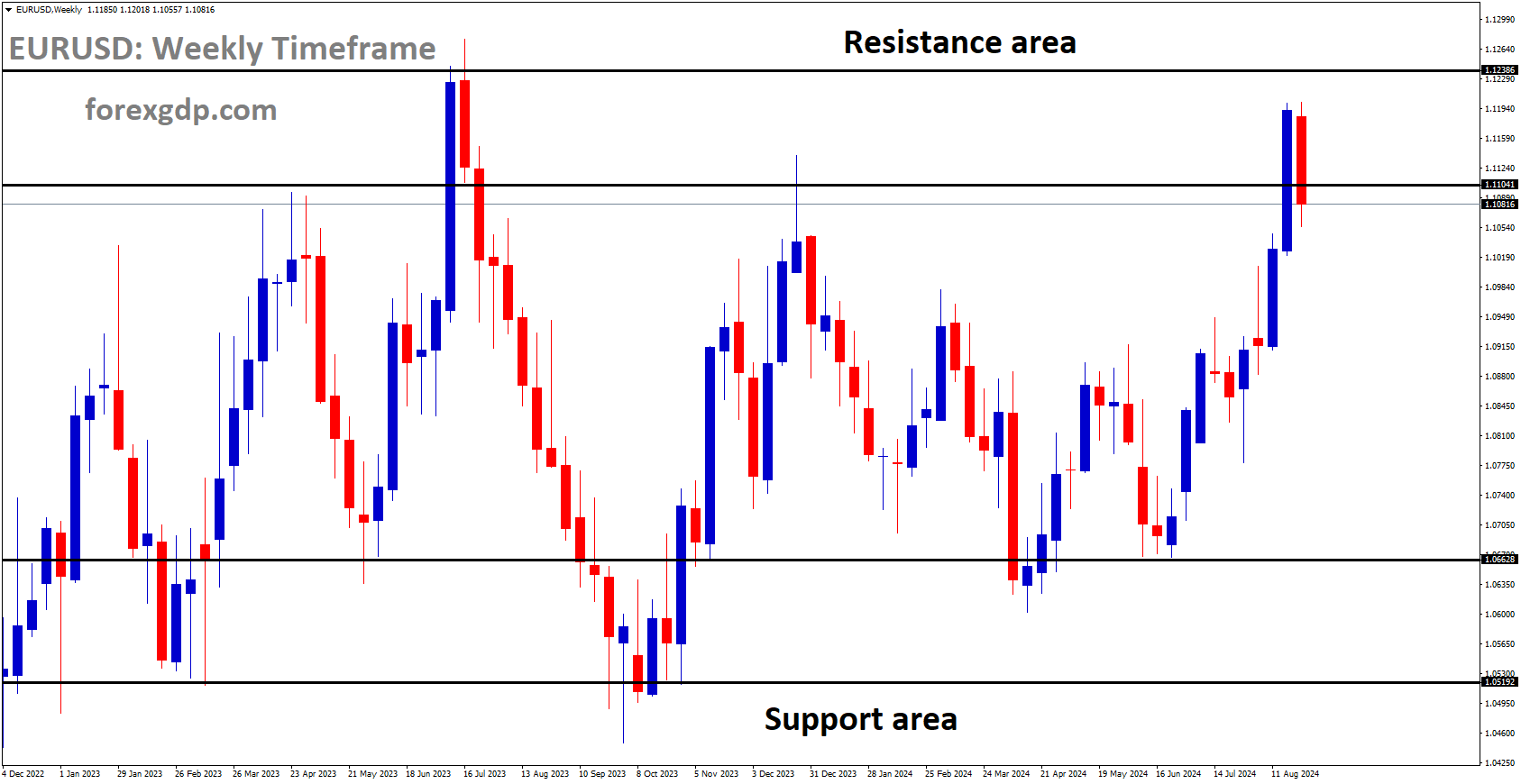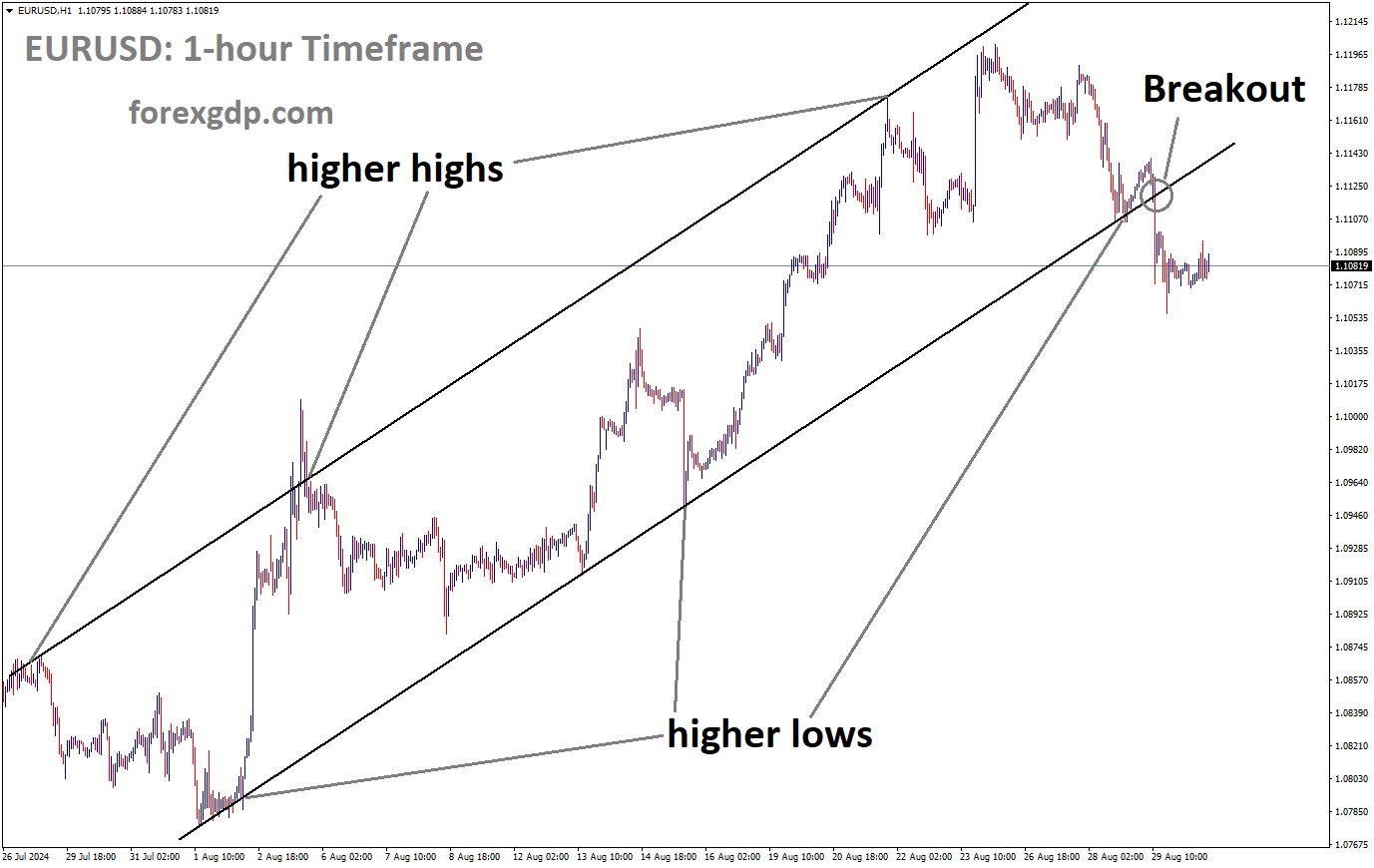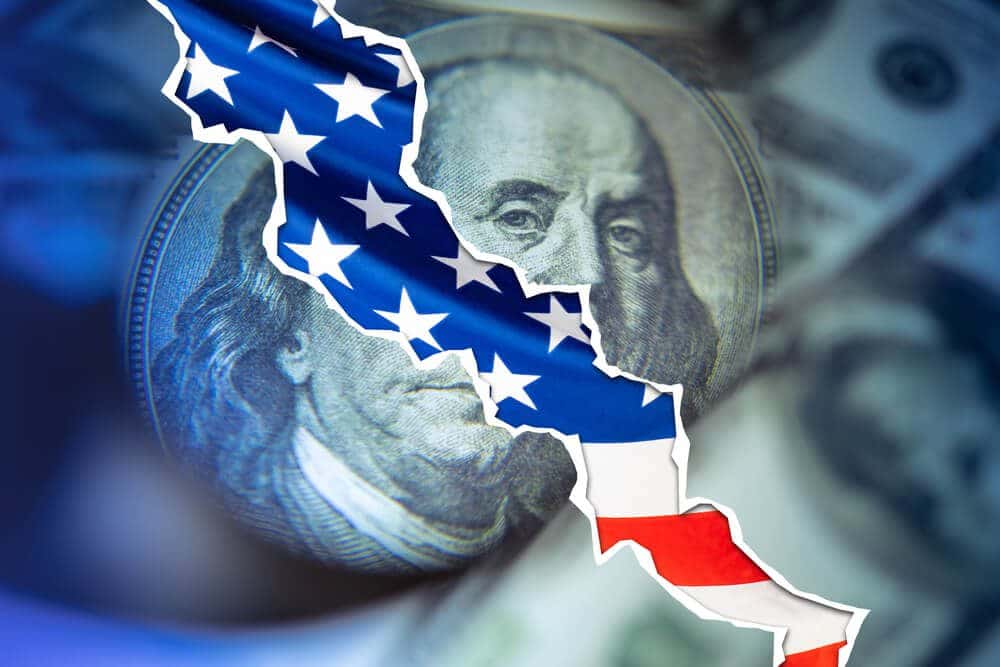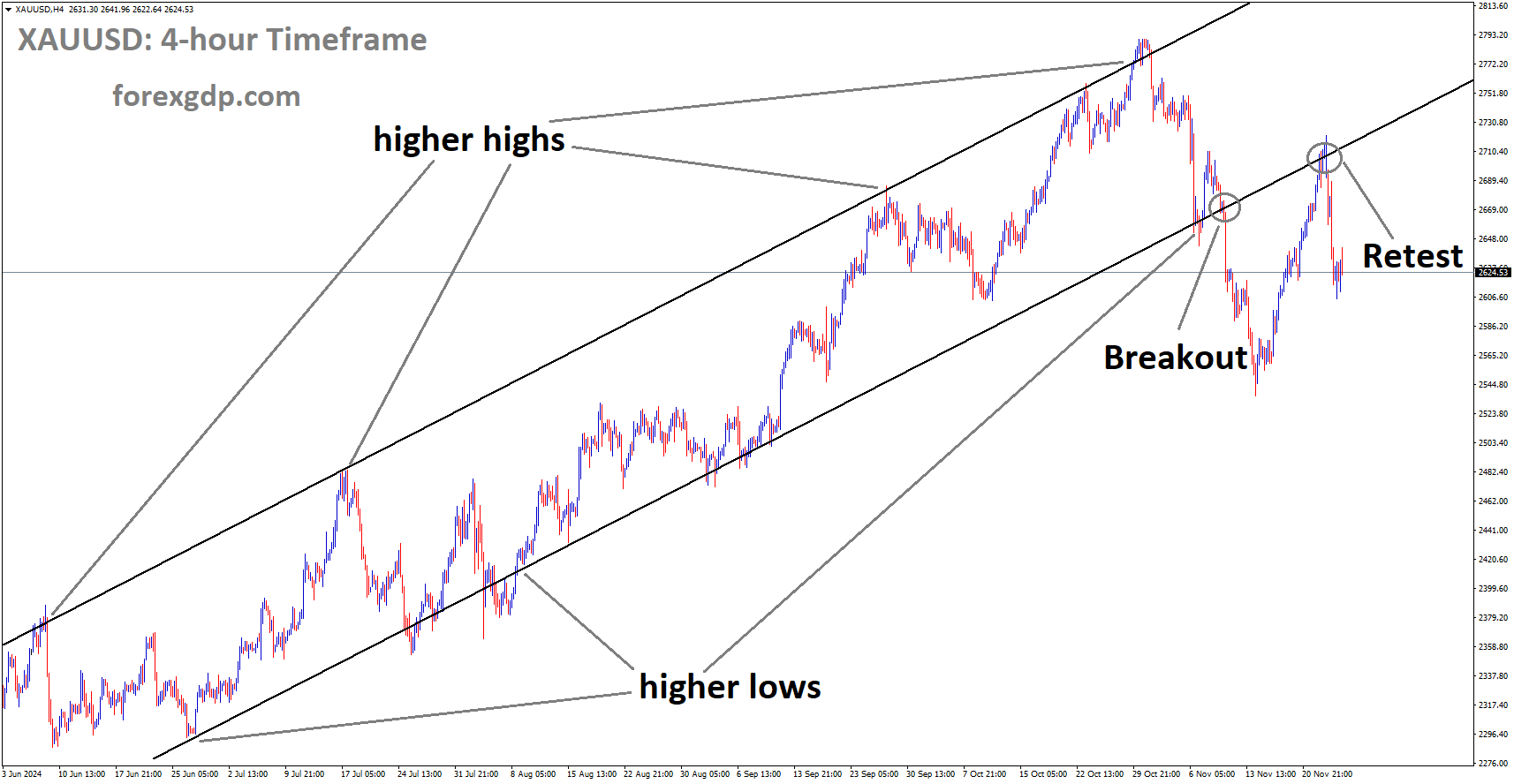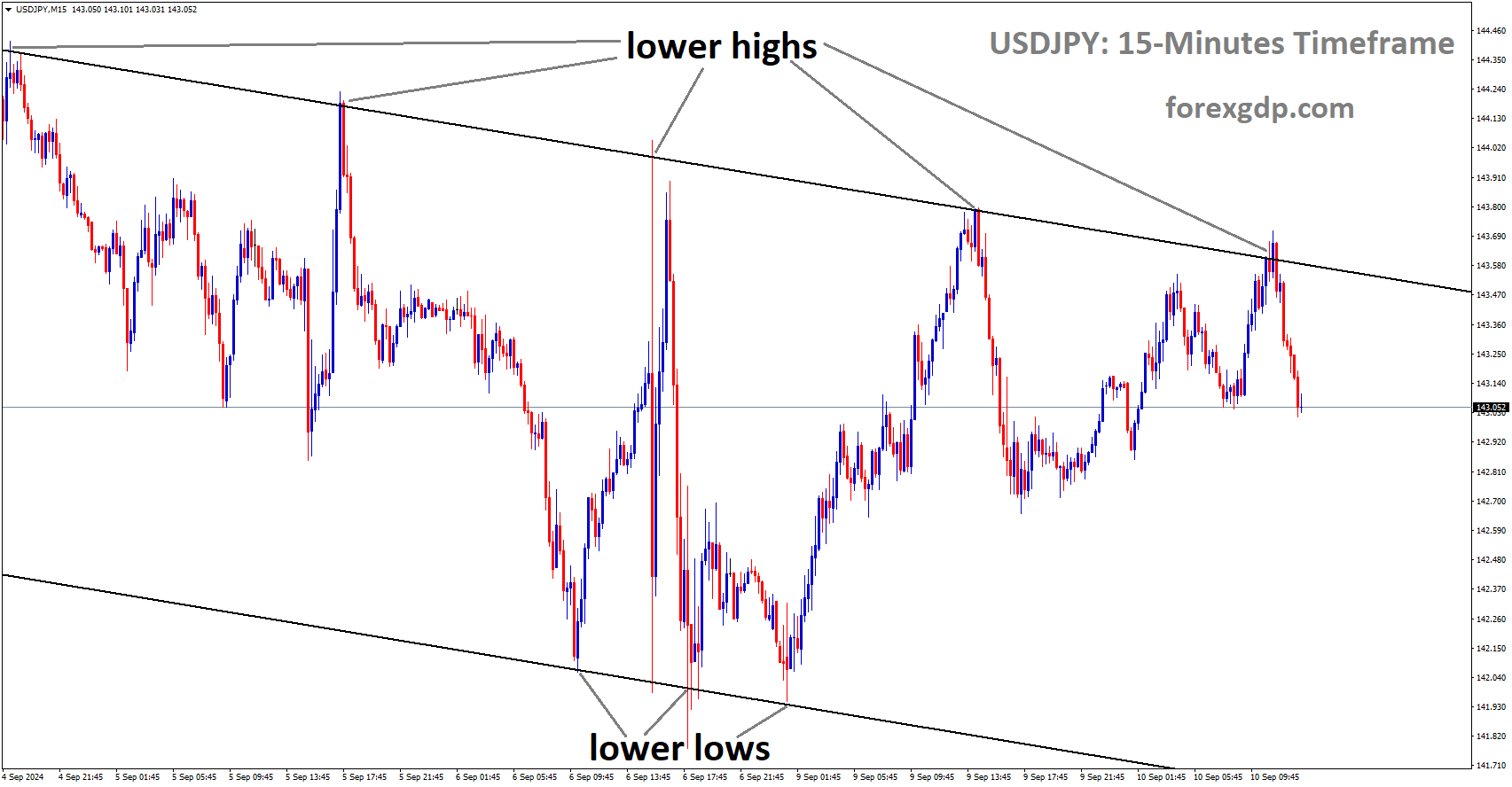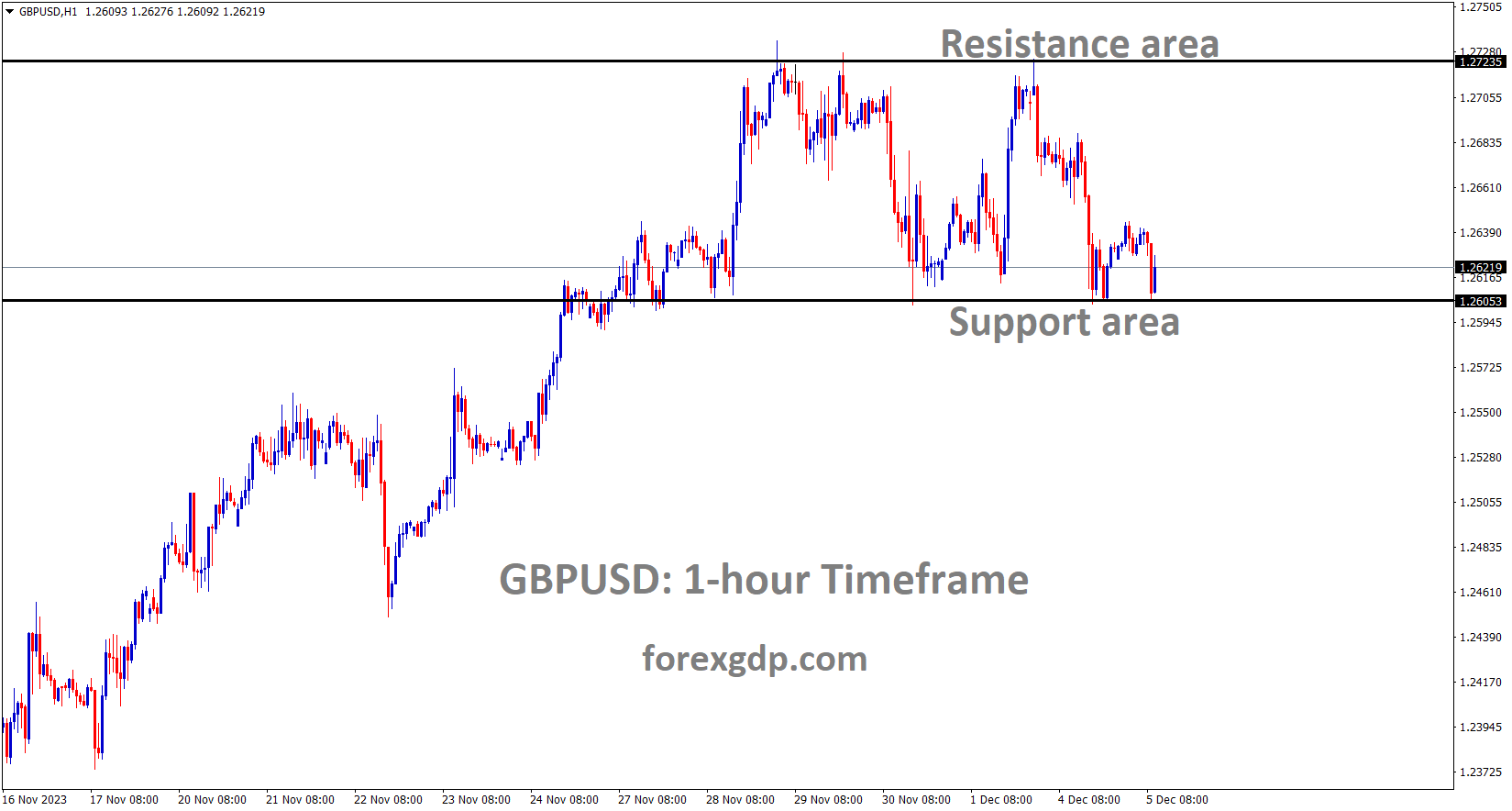EURUSD is moving in a descending channel, and the market has reached the lower-high area of the channel
#EURUSD Analysis Video
EUR/USD: Navigating a Delicate Balance Amidst Eurozone Inflation and Fed Decisions
The EUR/USD currency pair has been navigating a complex landscape, shaped by evolving economic conditions in both the Eurozone and the United States. Recent developments have seen the Euro trading below the 1.1100 mark, a position influenced by a combination of softer-than-expected inflation data from the Eurozone and revised economic growth figures from the U.S. Let’s dive into the factors driving these movements and what they mean for the broader market.
Eurozone Inflation: A Key Driver for EUR/USD
In August, the Eurozone’s flash annual Harmonized Index of Consumer Prices (HICP) showed a decline, with headline inflation decelerating to 2.2% from July’s 2.6%. This dip is largely attributed to lower energy prices, which have had a cascading effect on the overall inflationary environment. The core HICP, which strips out volatile components like food, energy, alcohol, and tobacco, also saw a slight reduction, growing by 2.8%, down from the previous month’s 2.9%.
The softening inflation figures have fueled speculation about the European Central Bank’s (ECB) next move. The market has increasingly priced in the likelihood of another interest rate cut by the ECB in September, following the bank’s decision to leave rates unchanged in August. This sentiment is bolstered by recent data from Germany, the Eurozone’s largest economy, where inflation has returned to 2% for the first time in over three years. Coupled with a slight contraction in Germany’s economy in the second quarter, the outlook suggests that the ECB might lean toward further easing to support growth.
The ECB’s Dilemma: Balancing Inflation and Economic Growth
The ECB finds itself in a challenging position. On one hand, the decline in inflation across the Eurozone suggests that the economy could benefit from lower borrowing costs. On the other hand, the overall economic outlook remains uncertain, particularly with Germany flirting with recessionary conditions. France and Spain, two other significant Eurozone economies, have also experienced notable drops in inflation, further complicating the ECB’s policy path.
Carsten Brzeski, global head of macro at ING, noted, “Fading inflationary pressure combined with fading growth momentum offers an almost perfect macro backdrop for another rate cut.” This perspective underscores the delicate balance the ECB must strike between supporting economic growth and managing inflationary pressures.
EURUSD is moving in a box pattern
Looking ahead, it’s anticipated that the ECB may opt for an additional interest rate cut in the final quarter of the year, depending on how the economic data evolves. The potential for further easing has kept the Euro under pressure, contributing to its struggle to break above the 1.1100 level against the U.S. Dollar.
The U.S. Economic Landscape: Impact on EUR/USD
Across the Atlantic, the U.S. economic picture has also been a significant influence on the EUR/USD pair. The U.S. Dollar has found some support from upward revisions to the second quarter Gross Domestic Product (GDP) figures, which showed the economy growing at an annualized rate of 3%, compared to the earlier estimate of 2.8%. This robust growth has slightly reduced the market’s expectations for aggressive rate cuts by the Federal Reserve.
The upcoming release of the U.S. Personal Consumption Expenditure (PCE) Price Index for July is being closely watched by investors. As the Federal Reserve’s preferred inflation gauge, the PCE report is expected to provide crucial insights into the Fed’s potential policy moves in the September meeting. Market participants are particularly interested in the core PCE figures, which exclude food and energy prices. A rise in core inflation could signal that the Fed might adopt a more cautious approach to rate cuts, further influencing the EUR/USD dynamics.
EURUSD has broken the Ascending channel in the downside
The market remains split on the magnitude of the Fed’s rate cut in September. According to the CME FedWatch tool, there is a 33% probability of a 50-basis point cut, while the majority expects a smaller 25-basis point reduction. The decision will likely hinge on incoming economic data, including the PCE index and other indicators of inflation and economic growth.
Market Sentiment: What’s Next for EUR/USD?
As we look ahead, the EUR/USD pair is likely to remain sensitive to economic data from both the Eurozone and the U.S. The interplay between Eurozone inflation trends and U.S. economic growth will continue to drive the pair’s movements in the near term. If the ECB proceeds with additional rate cuts and the Fed adopts a more measured approach, we could see further downward pressure on the Euro.
For traders, this environment presents both challenges and opportunities. The key will be staying attuned to the latest economic data releases and central bank communications, which are likely to provide the clearest signals on the direction of monetary policy and, by extension, the EUR/USD exchange rate.
Navigating the Currency Market
In the currency market, nothing is set in stone. The EUR/USD pair is influenced by a myriad of factors, from central bank decisions to geopolitical events. Understanding these drivers is crucial for anyone looking to trade this pair.
As the market waits for more data, it’s clear that both the ECB and the Fed have tough decisions ahead. Whether it’s the ECB’s struggle with low inflation and slow growth or the Fed’s balancing act between strong economic data and the need to maintain inflation targets, the actions of these central banks will be pivotal in shaping the future trajectory of EUR/USD.
Final Summary
The EUR/USD exchange rate is caught in the crosswinds of Eurozone inflation and U.S. economic data. With the ECB poised for possible rate cuts and the Fed’s next move still uncertain, the currency pair’s path forward is anything but clear. Traders and investors will need to keep a close eye on economic indicators and central bank signals to navigate this challenging environment effectively.
Don’t trade all the time, trade forex only at the confirmed trade setups
Get more confirmed trade signals at premium or supreme – Click here to get more signals , 2200%, 800% growth in Real Live USD trading account of our users – click here to see , or If you want to get FREE Trial signals, You can Join FREE Signals Now!



